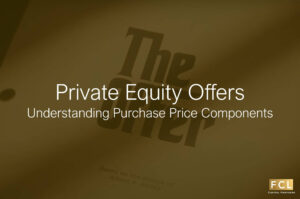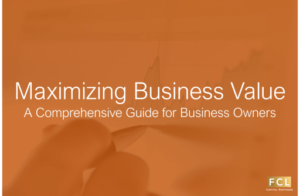Private Equity Offers
Understanding Purchase Price Components


Private equity (PE) transactions are complex and multi-faceted investments that involve a significant amount of capital. In these transactions, the purchase price of a target company is typically composed of several different components, each with its own unique set of terms and conditions.
In this article, we will examine the six primary components of the purchase price in a private equity transaction: cash, third-party financing, seller notes, rollover equity, earnouts, and escrow.
1. Cash
Cash is a straightforward and easily transferable form of payment in a PE transaction. Cash can come from a variety of sources, including
the PE firm’s own funds, debt financing, or the sale of assets. The use of cash in a PE transaction can provide a clear and simple way to pay for the target company, but also has some disadvantages. For example, the PE firm may have limited cash resources, which could limit the size of the transaction or the number of transactions that the firm can complete. Additionally, the use of cash can be more expensive than other forms of financing, as the PE firm may need to raise additional funds to pay for the purchase price, which could result in higher interest costs.
2. Third Party Financing
Third-party financing is a common component of PE transactions, especially for larger transactions. Third-party financing can come from a variety of sources, including banks, investment firms, and other financial institutions. Third-party financing can provide the PE firm with the capital needed to pay for the purchase price of the target company, while also providing the PE firm with additional flexibility to allocate its own capital to other investments or transactions. Third-party financing can also help to reduce the cash component of the purchase price and provide the PE firm with additional resources to support the growth and development of the target company.
3. Seller Notes
Seller notes are a type of financing in a PE transaction that involves the target company’s existing owners providing a loan to the PE firm. Seller notes are typically structured as debt securities and can be used to finance a portion of the purchase price. Seller notes can provide the PE firm
with additional financial resources to pay for the purchase price, while also providing the target company’s existing owners with a return on their investment. Seller notes can also be structured to align the interests of the PE firm and the target company, as the loan is typically secured by the assets of the target company.
4. Rollover Equity
Rollover equity is a component of the purchase price in a private equity transaction that allows existing owners of the target company to invest a portion of the proceeds from the sale of their ownership interest back into the target company.
Rollover equity can provide several benefits in a PE transaction, as it can help to align the interests of the PE firm and the target company, and it can also provide a way for the target company’s existing owners to participate in the future success of the company. However, it is important to carefully structure the rollover equity to ensure that the interests of both parties are aligned and that the terms of the rollover equity are fair and reasonable.
5. Earnouts
An earnout is a portion of the purchase price of the target company that is contingent upon the target company meeting specific performance milestones. For example, an earnout might be structured such that the PE firm will pay an additional amount to the target company’s existing owners if the target company achieves a certain level of revenue or profit over a specified period of time. The earnout period is typically between 1 and 3 years following the closing of the transaction.
Earnouts can provide several benefits in a PE transaction. For the PE firm, earnouts can help to reduce the upfront cost of the transaction, as a portion of the purchase price is paid only if the target company meets specific performance milestones. Additionally, earnouts can help to align the interests of the PE firm and the target company, as the target company’s management team will be incentivized to support the PE firm’s strategy for improving the performance of the target company.
For the target company, earnouts can provide a way to receive additional financial compensation for the future performance of the company. Additionally, earnouts can provide a way for the target company’s existing owners to participate in the future success of the company and to share in the benefits of the PE firm’s strategy for improving the performance of the target company.
It is important to carefully structure earnouts in a PE transaction to ensure that the interests of both the PE firm and the target company are aligned. For example, the performance milestones should be clearly defined and measurable, and the terms of the earnout should be fair and reasonable for both parties. Additionally, it is important to consider the tax implications of earnouts, as the payment of earnouts can have a significant impact on the tax liability of the target company and its existing owners.
6. Escrow
Escrow is a component of the purchase price that is held in a secure, third-party account until certain conditions are met. In a PE transaction, escrow is used to provide security and protection for both the private equity firm and the target company. Escrow can be used to protect the private equity firm’s investment in the event that the target company fails to meet certain conditions, such as a seller’s breach of representations and warranties contained in the purchase agreement. Escrows normally range from 10-25% of the purchase price and are typically held for a period of 12 to 24 months.
Conclusion
In conclusion, private equity deal structures are a crucial aspect of private equity transactions and can have a significant impact on the success of the investment. Cash, third party financing, seller notes, rollover equity, earnouts, and escrow are six common deal structures that are often used in private equity transactions. Each of these structures has its own unique benefits and drawbacks, and the choice of structure will depend on the specific needs of the target company and the private equity firm.

Private Equity Offers
Understanding Purchase Price Components
Interested in Learning More?
Please send us a message and we will get back to you soon.




